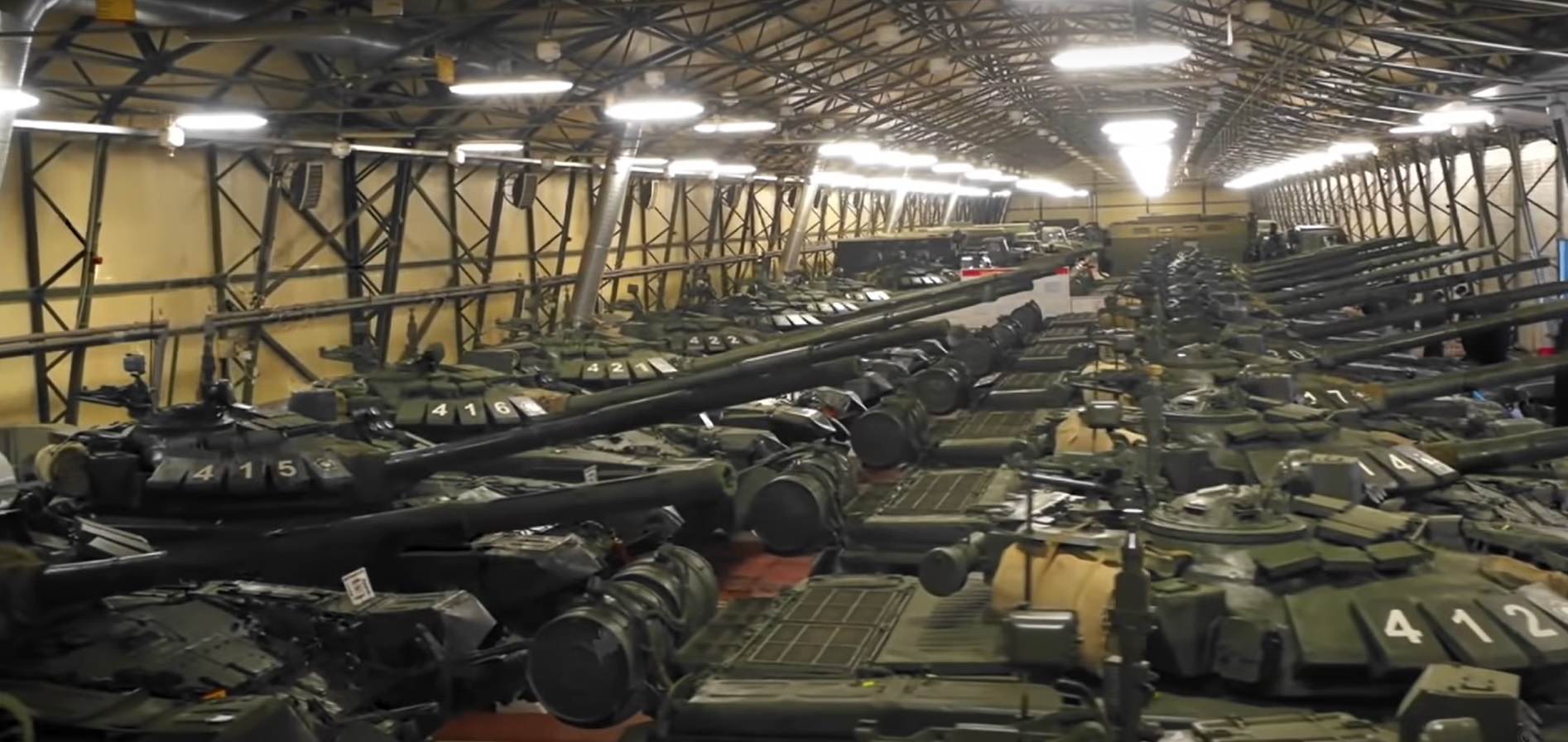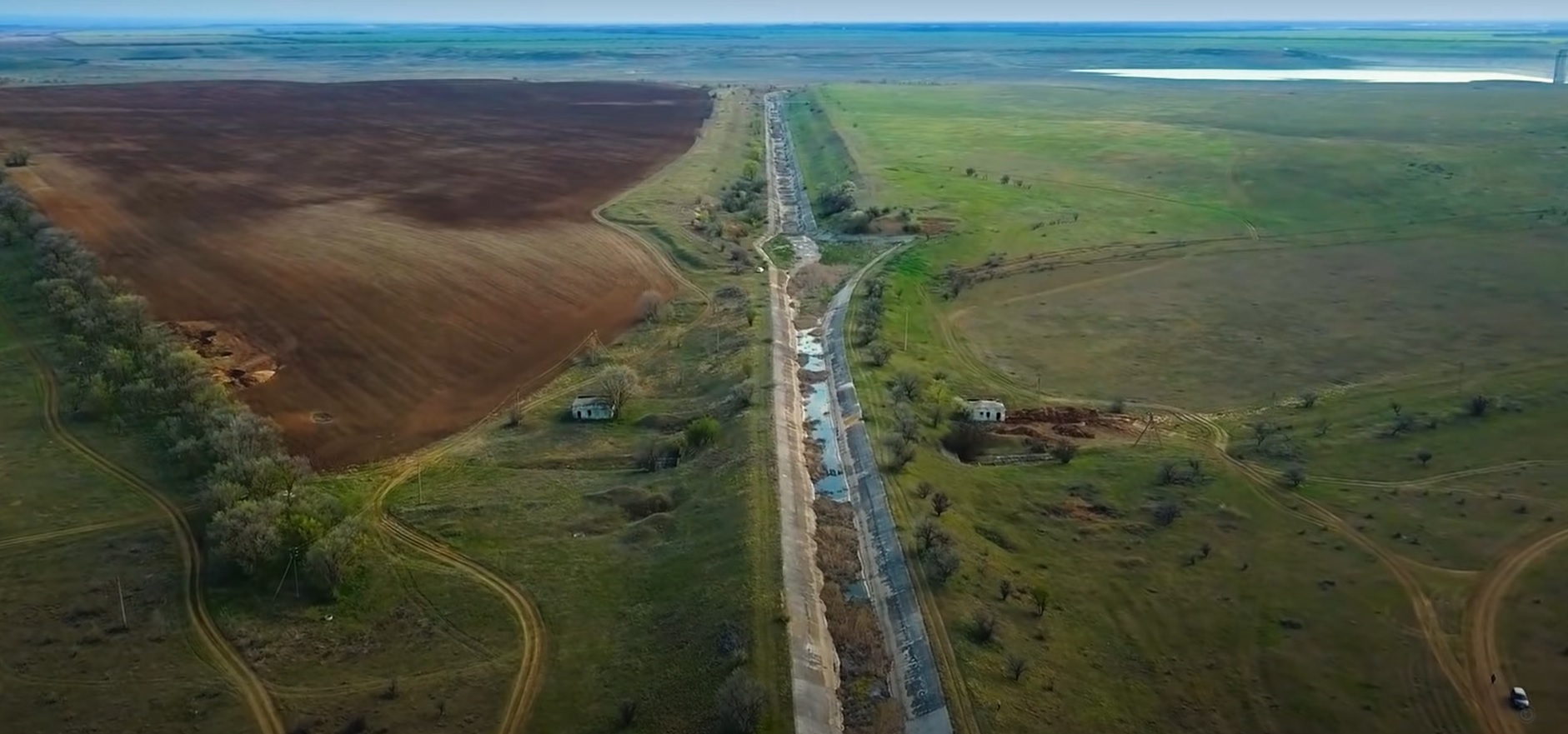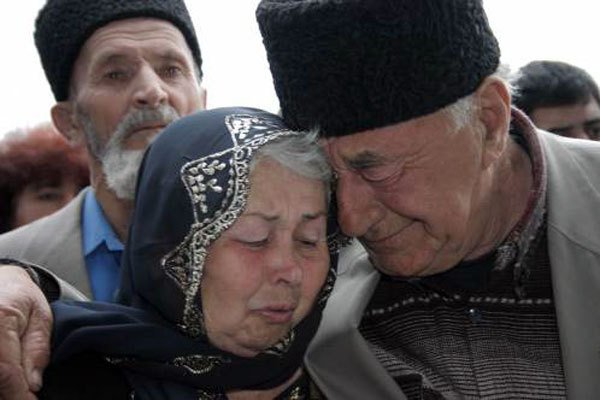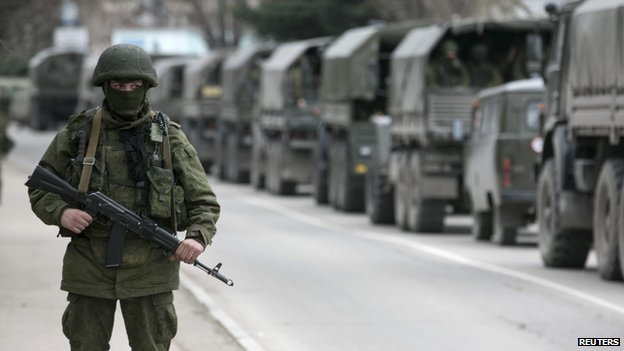Experts estimate that had resources been used rationally, Crimea’s natural water supply would have covered the needs of its population. However, Russia has not gone this way. Instead, it blamed Ukraine for Crimea’s water troubles, turning this problem into one more instrument of propaganda and spending scarce resources for militarization. The documentary Crimea. Dehydration by the Crimean Tatar Resource Center and the Mir & Co Charitable Foundation analyses the water situation in Crimea.
At the beginning of the film, Andriy Senchenko, Deputy Chairman of the Council of Ministers of the Autonomous Republic of Crimea during 1993-1997, presented estimates confirming that Crimea is able to provide itself with water:
- on average the peninsula receives approximately one billion cubic meters of water per year from rain and snow;
- up to 500 million cubic meters more can be drawn from underground horizons without creating problems.
According to Senchenko, the population needs 120 million cubic meters of water.
The authors of the film explain that all the Russian projects called to improve the water supply for the population work only on paper, but the water needs of the ever-growing Russian military presence in Crimea, as well as the politicians, are fully covered.
The propaganda fight for the North Crimean Canal

In 2014, after the occupation, mainland Ukraine cut off its water supply to Crimea coming in through the North Crimean Canal. Russia requires this water for industrial production and militarization, not for ordinary citizens’ needs. However, the occupiers constantly generate media headlines accusing Ukraine of violating the rights of the Crimean population.
“According to international law, of course, Ukraine has some obligations before the population of Crimea, but they are not active. If we do not control the peninsula, Ukraine can’t send a team of repairment to [the city of] Dzankoi and mend a district heat network there as we do not have physically this opportunity, no one will let them enter the territory,” Borys Babin, ex-representative of the President of Ukraine in Crimea explains.
In fact, the Fourth Geneva Convention states that the occupying force controlling the territory is fully responsible for providing the needs of its population.
Instead, during the last years, Russia has made different attempts to force Ukraine to return the water to the canal.
Already in March 2021, the so-called Crimean authorities stated they are going to sue Ukraine for blocking the Canal.
“The Russian occupation regime likes to use the term ‘water blockade,’ presumably hoping that its audience can be conned into believing that Ukraine is blocking something that is ‘rightfully Russia’s’,” describes Halya Coynash, a journalist and human rights activist from the Kharkiv Human Rights Protection Group.
The intention to sue Ukraine is another one of Russia’s attempts to score points in the eyes of its domestic audience. Nevertheless, Babin explains in the film that official steps by Russia are unlikely: no such mechanisms exist, but even if they did, they would cause negative legal consequences for Russia.
Moreover, Ievhen Khlobystov, professor of Environmental Studies, explains that because of the years of inactivity, the North Crimean Canal has become cracked and is now rendered unusable.
Corruption erodes money for potential solutions

While the local population suffers because of water scarcity, the peninsula is drowned in corruption. Babin explains that Russian corrupts launder huge amounts through the water problem.
"Most cynical in this situation is the struggle between two groups of the so-called Crimean authorities. One of them aimed at establishing desalination stations in Crimea while the other refused to build them and aimed to somehow persuade Ukraine to supply water through the North Crimean Canal."
For both, however, the main goal was to absorb the budgets for potential solutions, not to arrive at the solutions themselves.
Building desalination plants in Crimean seems unrealistic. First, it raises questions of where the energy for the process will come from, where the plants will be placed, and how to deliver the water to the population. As well, there is also the issue of discarding brine after desalination.
“The Russian authorities do not consider step B. They had two options: to dump the brine somewhere. This option was not viable because Crimea is pretty small, it is not the Siberian forests where everything gets dumped without a trace. The second option was to dump it back into the sea but it is risky even if the Ukrainian authorities keep silent...The Romanians, Bulgarians, and Turks will be a bit indignant at the destruction of the Black Sea and all the life there.”
Colonial policy devastates peninsula the most

Senchenko stresses that it is not production and militarization which carry the catastrophe, but in general Russia's colonial policy - when hundreds of Russians were taken to Crimea.
Since 2015, together with the mass resettlement, mass construction commenced. All of these processes are controlled by criminal gangs which are not able to provide quality.
Akhtem Chiygoz, Deputy Chairman of the Mejlis of the Crimean Tatar People elaborates that, as the groundwater water was drilled from artesian wells and considering that Crimea is practically an island, the water from wells was replaced by seawater.
"Aquifers in Crimea cannot be depleted in one year, but they have a certain limit, and we see that Russian Federation is successfully approaching this limit," Babin says.
These days water in Crimea is supplied to the citizens according to a schedule, 2-3 hours per day, and its quality is questionable.
Military needs in water is a priority for Russia, not ordinary citizens

The majority of new Crimean citizens are members of the military and their families. For them, new military cities were built. And the water supply of new military objects was the first issue on the agenda.
In this regard, the lack of water from the Ukrainian river Dnipro after the North Crimean Canal was cut off, turned into a serious problem. If Russia managed to receive this water, it would use it particularly for the needs of the military.
- Read also: Ukraine’s new fiction reflects warriors of light, Crimean fleet, and Russian occupation
- Documentary “Crimea. As it Was” shows the very beginning of Russia’s occupation of the peninsula
While ordinary citizens have tap water for six hours a day, Russia actively organizes military drills. Only during summer 2020, there were about 10 of them.
Sergiy Voloshyn, expert of the Crimean Tatar Resource Center, member of the expert council on environmental protection, underlines another potential threat -- radiation pollution.
"Now, it is not possible to determine whether there are any radiation military facilities on the territory of Crimea or not. Can we say for sure that no nuclear weapons were brought here?"
Agriculture on the brink

Before the occupation, Crimea was strong at viticulture, cultivation of rice, and other moisture-loving crops, as well as in fisheries. Crimean wine was famed internationally.
Predictably, Russia’s occupation policy led to a significant decline in all these directions. According to Russian official information, the 2016 yield in Crimea fell by 25%.
Now, rice cultivation has totally stopped.
Viticulture has already lost its prominence. The yield of vineyards decreased. However, as the authors of the film explain, this is explained not as much by water scarcity, but by protection of vine producers from mainland Russia.
In 2016, Russian media declared that animal husbandry should be developed on the peninsula. But it was hit by water scarcity as well. In 2016-2017, Russian media declared that meat production increased. The authors of the film state it could be explained by the fact that a large number of cattle were slaughtered, as they could not be fed. Afterwards, the production of dairy products fell by 35%.
There used to be 14 fish farms in the east of the peninsula. The fish were raised in freshwater. With the onset of water deficiency, more than 15,000 people lost their jobs.
Water scarcity as a probable reason for environmental catastrophe
Water problems lead to other environmental problems. And in 2018, a catastrophe indeed came to the north-Crimean city of Armiansk, home to about 22,000 people, lying near the administrative border to mainland Ukraine’s Kherson Oblast.
The local residents smelled an acidic odor and started experiencing eye, throat, and skin irritations. Later, reports came that pets were starting to suffer and die.
The Crimeans suspected that an unknown substance was spewed into the air by the nearby Crimean Titan
plant, which produces concentrated sulfuric acid and uses it to dissolve titanium dioxide from ilmenite, titanium ore.
Up to autumn 2016, the plant belonged to Ukrainian exiled oligarch Dmytro Firtash. After that, formally to his partner Oleksandr Yemelianenko. Who bears the responsibility now is an open question.
Presumably, the catastrophe was caused by the lack of water resources in the production cycle of the plan.
Meanwhile, the number of patients with pulmonary and oncological diseases in Armyansk increased by 100%.
The authors state that one of the ways to solve the problem is to involve international environmental missions for monitoring the situation.
“According to our preliminary data, it would take at least 50 years in order not to restore the balance, but in order to at least restore the processes to restore the balance,” Eskender Beriev, the head of the board of the Crimean Tatar Resource Center concludes.
Khlobystov in his turn adds that Russia already received everything it wanted from Crimea - ideology, propaganda, the Kerch bridge, and the FSB will deal with those who disagree with such a policy.
So far, some water remains on the peninsula, but its disappearance is only a matter of time.
Read also:
- Ukraine “satisfied” as Russia gets nervous about Crimean Platform
- Crimeans have tap water only six hours a day as all Russian attempts to hydrate occupied peninsula fail
- Crimean Platform sets the scene for deoccupation, all UN members should join – Ukrainian expert at UNSC





